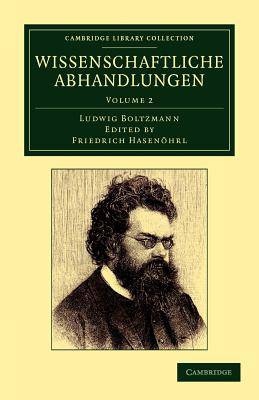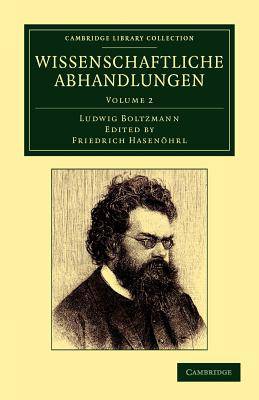
Door een staking bij bpost kan je online bestelling op dit moment iets langer onderweg zijn dan voorzien. Dringend iets nodig? Onze winkels ontvangen jou met open armen!
- Afhalen na 1 uur in een winkel met voorraad
- Gratis thuislevering in België vanaf € 30
- Ruim aanbod met 7 miljoen producten
Door een staking bij bpost kan je online bestelling op dit moment iets langer onderweg zijn dan voorzien. Dringend iets nodig? Onze winkels ontvangen jou met open armen!
- Afhalen na 1 uur in een winkel met voorraad
- Gratis thuislevering in België vanaf € 30
- Ruim aanbod met 7 miljoen producten
Zoeken
Omschrijving
The Austrian physicist Ludwig Eduard Boltzmann (1844-1906), educated at the University of Vienna, was appointed professor of mathematical physics at the University of Graz in 1869 at the age of only twenty-five. Boltzmann did important work in the fields of statistical mechanics and statistical thermodynamics; for instance, he contributed to the kinetic theory concerned with molecular speeds in gas. Boltzmann also promoted atomic theory, which at the time was still highly controversial. He was a member of the Imperial Austrian Academy of Sciences from 1885 and became a member of the Royal Swedish Academy of Sciences in 1888. This three-volume work, prepared in 1909 by the physicist Fritz Hasenöhrl, one of Boltzmann's students, comprises all his academic publications from 1865 to 1905. Volume 2 contains work from 1875 to 1881 on the thermal conduction of gases, the mechanic theory of heat and its problems, and the friction of gas.
Specificaties
Betrokkenen
- Auteur(s):
- Uitgeverij:
Inhoud
- Aantal bladzijden:
- 608
- Taal:
- Duits
- Reeks:
Eigenschappen
- Productcode (EAN):
- 9781108052801
- Verschijningsdatum:
- 23/08/2012
- Uitvoering:
- Paperback
- Formaat:
- Trade paperback (VS)
- Afmetingen:
- 140 mm x 216 mm
- Gewicht:
- 762 g

Alleen bij Standaard Boekhandel
+ 241 punten op je klantenkaart van Standaard Boekhandel
Beoordelingen
We publiceren alleen reviews die voldoen aan de voorwaarden voor reviews. Bekijk onze voorwaarden voor reviews.











